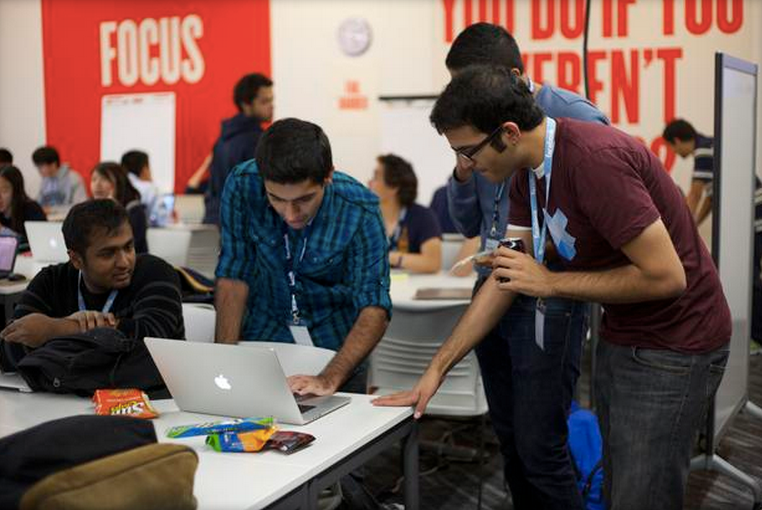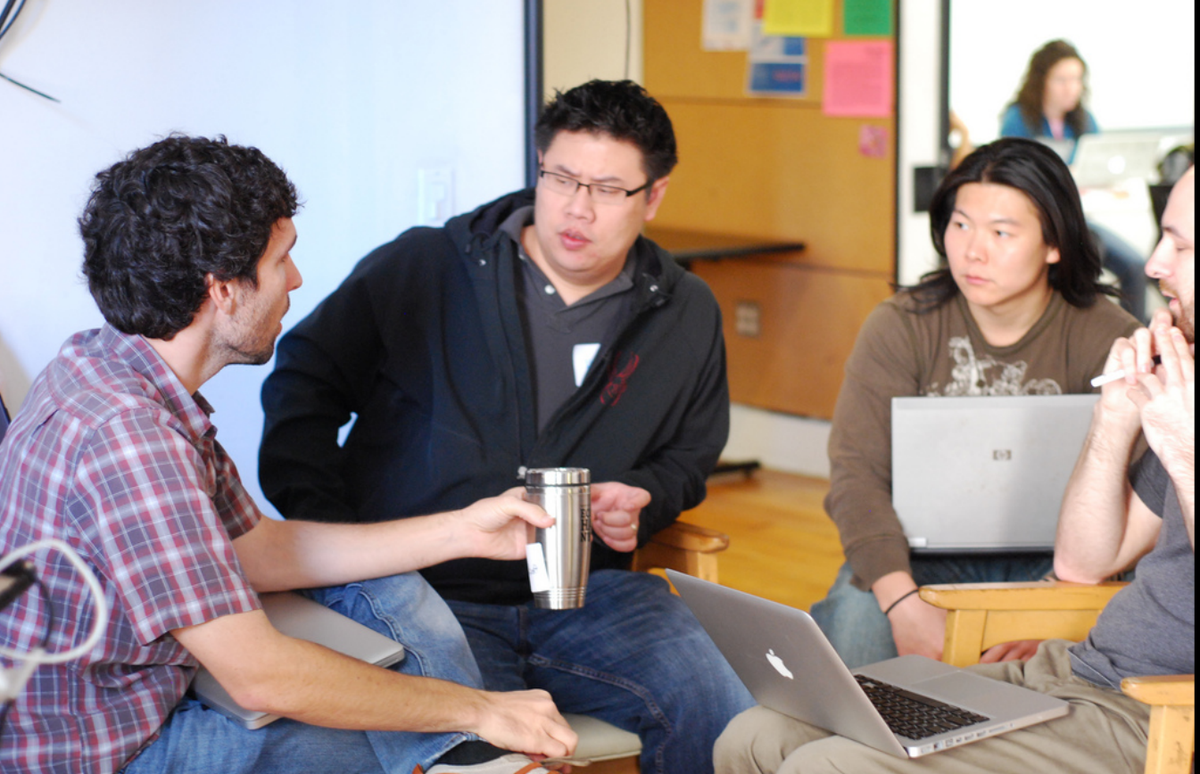
Hackathons have taken the world by storm, happening all over the globe and across many different industries. The events, which typically last between a full day and a weekend, bring together innovative strangers to solve problems and improve our world with technology. Hackathons are for fun, but they can also create important changes to whatever system they address, and they’re starting to have a big impact.
In recent years, hackathons have evolved, transitioning from a stereotypical computer programming weekend filled with a bloodshot eyes, energy drinks, pizza, and software innovations into a real idea vehicle for a variety of industries. Today there are hackathons for medical technology, lifestyle apps, social media innovation, and important social issues — and the list is continually growing.
For instance, a hackathon held by a medical technology group and MIT aimed to tackle the issue of infant deaths from breathing problems. It resulted in the creation of an Augmented Infant Resuscitator (AIR), which, if developed, could save millions of lives. Another example: NASA’s annual hackathon, which is the largest in the world, brings thousands together to develop solutions on Earth and in space. Last year, winners developed an asteroid mapper and a company called Go Lab that develops nanosatellites for a variety of scientific purposes.
Hackathons are often held on college campuses, in high school classes, internally at specific companies, and through random meetup websites in various cities. But most importantly, hackathons combine the expertise of software developers, programmers, entrepreneurs, and digital enthusiasts, who can all create many more ideas by working together than if they worked alone.
If you’ve been thinking of organizing your own hackathon, then read on. Here are six of the most important tips to think about as you’re beginning to plan.
1. Prepare attendees ahead of time
Attendees are the ones that will come up with the ideas, and they are the reason for the hackathon in the first place. If the event is successful, attendees will come back the next year and bring more of their friends. Sponsors are also something to think about — sponsors will generate buzz about the event, and if it is successful, they will come back for a bigger, better event the next year.
Meetups with possible attendees are important before the event, according to several people TechRepublic spoke to who have organized hackathons in the past. It’s a way to find people that aren’t immediately in your network. Connect via social media or specific online organizing tools and market the event. This way, participants can forge relationships and generate ideas before the event. Plus, it gets everyone excited.
“People with tech skills in particular are in high demand, so it’s important to reach out to them. If you need scientists, focus on them. Meetups are a great way to get the word out,” Kraft said. “It can be really helpful to cultivate a few solid projects ahead of time. That usually comes down to having good project leaders with focused ideas.”
Cultivate attendance with specific members of the community of interest for your event, said Robin Kraft, who organizes EcoHack, an international hackathon for people to come up with innovative plans to improve the environment. First, it’s very helpful to get information about attendee skills. You can use platforms like Eventbrite to set up simple surveys to better understand what each attendee will have to offer. Kraft said there are more sophisticated platforms like SparkBoard.com to help attendees discover each others’ skills, projects, and interests. “Discovering skills and projects can be difficult,” Kraft said. By allowing attendees to get to know each other beforehand, it’s easier to set goals and understand what will come out of the event.
One common mistake is to think that everyone who signs up to attend will actually show up. Kraft said he usually plans for 60% of the number of signups. He still orders too much food, but it’s better than not having enough. And size doesn’t matter, as long as you have a few teams together that will work on focused projects. “I’m definitely guilty of trying to get a large crowd, but dedication and enthusiasm count for more than quantity of warm bodies in the room,” Kraft said.
2. Set goals
One of the most important things to figure out before you start are the goals of the hackathon. Before you even begin, make sure a hackathon is the right avenue to tackle the issues and come up with the best innovations. If that’s the case, setting clear goals will help you choose sponsors in the beginning, help organizers stay on track throughout the planning process, and help participants focus their efforts to make sure they are working on something impactful.
“If people are going to give up a day or a couple of days to work on something, it needs to be for a compelling reason,” said founder of Food + Tech Connect Danielle Gould, who has organized multiple food industry-related hackathons. “It’s also important to make sure that your goals align with attendees.”
For example, Gould said, Food + Tech Connect hackathons originally aimed to get more people developing food startups, but the organizers quickly realized that hackathons are not the best medium for kickstarting food companies. Many participants attend simply because they want to build cool stuff that actually solves problems. They want to learn about the technology and network with other people in the industry. It’s rare that teams will want to start a company with strangers. So instead, Gould and her team decided to focus on bringing the best and brightest together to democratize research and development for the food industry, encouraging people to open source their hacks so others can learn from and build upon the prototypes.
3. Have clear rules
This rule ties into the first two. When participants register for the event, make sure they immediately get a copy of the rules. Give it to them in advance so there is no doubt that everyone understands them. If there are changes, make sure to send out notifications. Rules include the mission, time allotted, limits of the software or hardware being created, and sources/data participants can use to create their product.
While at the event, make sure to state the rules aloud before it begins.
“You should make sure to clearly communicate judging criteria and any rules at the start of the event,” Gould said. Otherwise, there can be confusion and frustration among sponsors, judges, and participants.
4. Power and connectivity are critical
You need flawless Wi-Fi. This can make or break your event. It takes more power than you think to host a hackathon, even if there are only 50 laptops in the room. According to Hack Day Manifesto, which has all types of tips for hosting a hackathon, you will need at least 1.5 power sockets for every seat. That’s a minimum, as many participants will bring two or more devices.

A few other tips for power and connectivity:
- Make sure Wi-Fi is easy to access for all attendees (hand out cards and/or post signs with the Wi-Fi details)
- Make sure the Wi-Fi is well-secured.
- Make sure you have a backup internet option if the Wi-Fi goes out (ethernets, Mi-Fi hotspots, etc.)
- Make sure service providers know there will be many devices in the IP range and an increased number of connections on the network.
- Make sure you have spare cables and USB drives available.
- If this is a hardware hackathon, allow for extra power
Also, make sure there is physical security at the event. With hackathons comes a lot of expensive equipment — computers, laptops, tablets, phones, routers, and more. You want people to know there are secure places to store their belongings, especially their valuable devices.
5. Have realistic outcomes
Some great ideas come out of hackathons, and they can profoundly affect the area they’re focused on, be it sustainability, women in tech, food, healthcare, or entertainment. However, having unrealistic expectations about the hackathon — expecting that the end result will be the next billion dollar company bought by Google — will be your downfall. Keep in mind that this is to generate ideas, network, and understand more about the industry and the topic that participants are addressing.
Ask yourself questions like these:
- Do we want to choose winners? Not all hackathons need a definite winner and loser. For example, EcoHack has never had prizes or judges, because it’s simply to generate ideas and start a movement. Some people say that it’s better to have hackathons be one-night stands, rather than having too many expectations for what may come of them.
- Who do we need to judge? If you would like to choose a winner, make sure you have a fair panel of judges, consisting of a wide array of expertise, opinions, and knowledge about the industry you are addressing. The judges should not be the main organizers of the event.
- What are the prizes? If there are winners, make sure you don’t make it all about the money prize. If you do that, people will attend for the payday rather than the innovation and fun of the event. Are you giving everyone a prize or incentive for attending, or is a winning pitch/product enough of a prize?
That said, make it worthwhile for the developers, too. You don’t want a bunch of ideas that never get put to use. Offer meetup opportunities and networking events afterward to keep the innovations alive. Give participants access to the data they need to move forward with their plans. You don’t want your event to be lost in the shuffle of hackathons and tech conferences. Make it count.
6. Don’t forget the simple things
Some of the easiest things to forget are often the most simple. For instance: food, beverages, and places to sleep if the hackathon lasts more than a day. Have a quiet, dark place for some rest if the event lasts through the night, and if possible, venues for showers. Make sure the venue is easy to find for out-of-towners and accessible for those with disabilities. A good location, date, and agenda are all important things that set you up for a great event, and they should be the first things you nail down.
Arrange for breakfast, lunch, and dinner, and have snacks available throughout the event. Have both healthy and junk food options. Contrary to the stereotypes throughout the history of hackathons, not everyone wants to eat chips and Pop-Tarts all night. Coffee and any other caffeinated beverages are also key for some attendees — especially the night owls who do their best work late at night.
“Make sure you have amazing Wi-Fi and lots of food and coffee,” Gould said. “People can’t hack unless there’s Wi-Fi and they will be cranky if there is no coffee.”